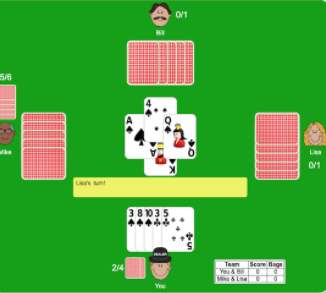The game of spades first debuted in the United States in the 1930s, and it was popularised by American soldiers during and after WWII. Although Spades was once primarily an American card game, it has recently gained international popularity thanks to the Internet.
Ranking of the Cards
A regular 52-card deck is used. A, K, Q, J, 10, 9, 8, 7, 6, 5, 4, 3, 2, A, K, Q, J, 10, 9, 8, 7, 6, 5, 4, 3, 2, A, K, Q, J, 10, 9, 8, 7, 6, 5, 4, 3, 2, A, K, Q, J, 10, 9, 8, 7, 6, 5, 4, 3,
The Deal In two-player spades, there is no such thing as a deal. Instead, the deck is shuffled and placed face-down in the middle, with two players taking turns drawing 13 cards each. You draw the top card by dragging it throughout your turn. When you begin drawing a card, it will only open for your eyes. You must decide whether to keep or discard this open card by looking at it:
If you want to keep it, you place it in your hand, and the next card you could have drawn is then presented to you and discarded.
If you opt not to keep the first card, you discard it to the right in the discard pile, then draw and keep the following card (it will go into your hand automatically to increase game speed). Following then, it will be your opponent's chance to draw. This process is repeated until all cards have been selected and discarded. After that, you each have a 13-card hand.
The goal of spades card game is to score the agreed-upon number of points first (default — 300 points). Points are won by winning tricks that match the bids made prior to the game.
Bidding
Following the selection of a hand, each spades player must choose their bid, which is an estimate of how many tricks they expect to receive throughout the hand. The image below shows how to choose a bid from a drop-down menu.
Joining the game
As the opening trick, any card other than a spade is led by the non-dealer. If able, the opponent must follow suit; if unable, the opponent may play any card.
If there is a spade in the trick, the trick is won by the highest spade played; if there is no spade, the trick is won by the highest card of the suit led. The winner of each trick takes the lead in the following trick. Spades may not be led until either a player has played a spade (on the lead of another suit) or the leader has no other cards in his or her hand except spades. Breaking spades refers to the act of playing the initial spade.
Scoring
If the contract is made, each trick bid is worth 10 points to the player. Overtricks are worth one point.
A player loses 10 points for each trick bid if he or she does not make the bet.
